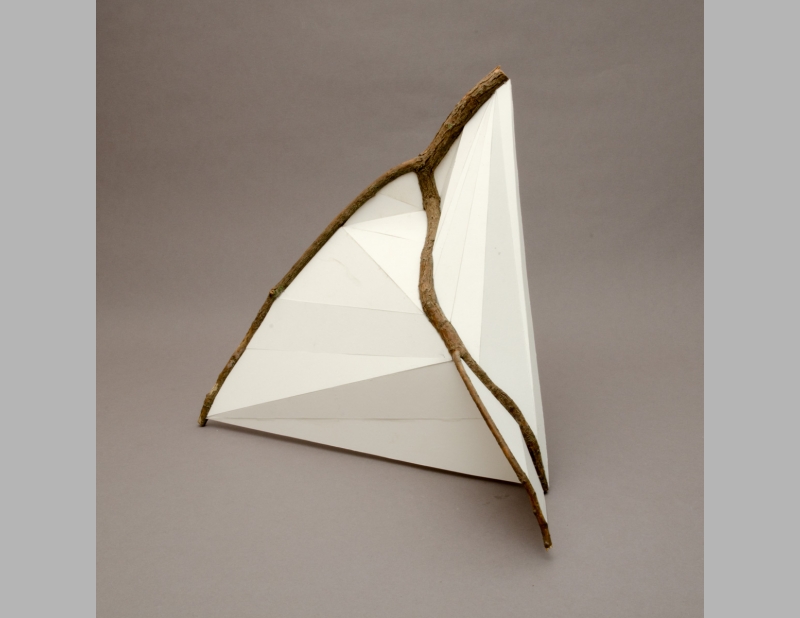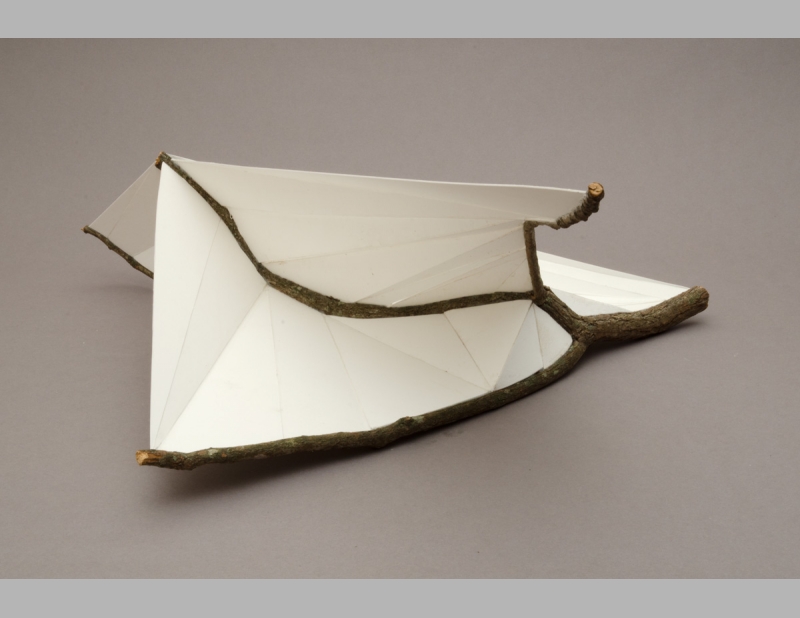Tree House / Study for the Groin Vault 2011
In 1973, shortly after receiving my degree in Architecture from the Rhode Island School of Design, I went into the forest searching for four trees that formed a square. When that task proved unsuccessful, I chopped one down, propped it back up with two by fours and repositioned it in relationship with three other trees to make a square. I read On Adams House in Paradise by Joseph Rykwert and studied the many rituals associated with trees in The Golden Bough by Sir James Frazier.
I morphed a tree branch into an I Beam, I quartered trees vertically and turned them inside out, I reconstructed trees into trusses, I stripped bark with curved gouge making a fluted column, I made an oak floor and lifted the ground into the sky, I wove branches into a roof, I grafted an oak with a poplar, I hybridized seeds that could grow into buildings. I ripped, I cross cut sawed, I quarter sawed, I rift sawed. I planed, jointed and dressed lumber.
An early proposal for our country house in Southold, Long Island suggested carefully excavating and exposing the roots of one of the many oak trees that needed to be removed in order to clear the site for our future home. Using the claws of the backhoe shovel, Tom Freund of TKF Excavating would carefully lift the tree from the site.
I was inspired by the concept of Tokonoma post used as a ceremonial column in traditional Japanese teahouses and the groin vaulted ceilings of gothic cathedrals.
Plaster troweled between the undulating, curved and irregular branches would slowly merge into the flat plastered ceiling of the house.
The oak roots of the tree stripped clean of the soil would be sanded smooth. The oak laid floor carved away to embed the roots would extend parquetry-like toward the walls of the Southold House.

